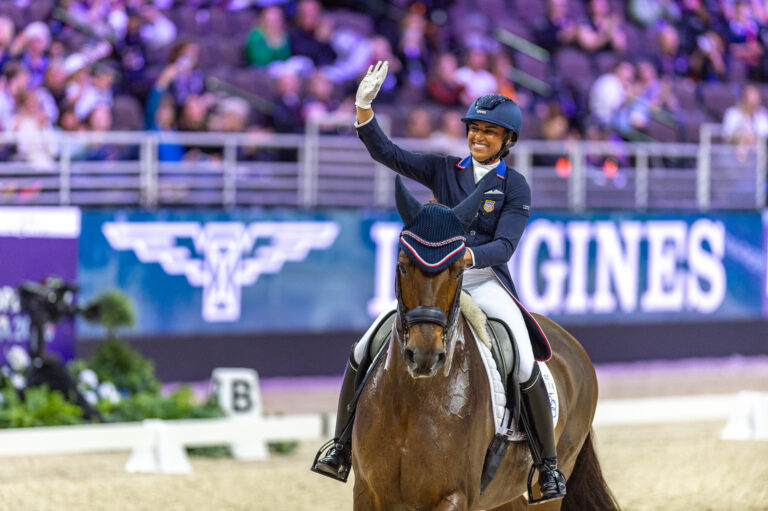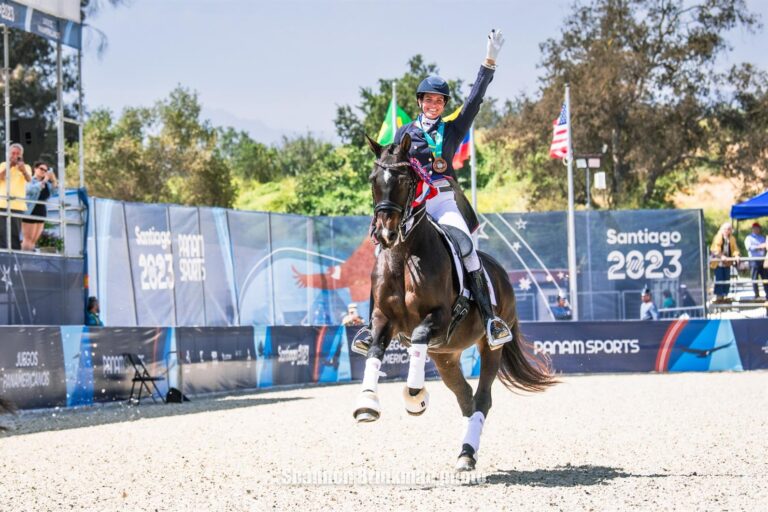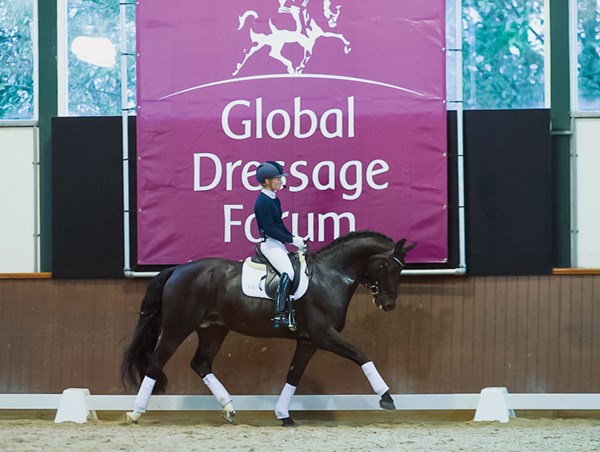
When the inaugural Global Dressage Forum (GDF) took place at the Academy Bartels in 2001, its creator, Joep Bartels, envisioned an event that would bring together all the stakeholders in dressage while also pushing the envelope and challenging the status quo. The GDF quickly developed a reputation for being a touchstone of the state of international dressage. No controversy has gone untouched by the GDF organizers, but unwavering respect for all points of view has resulted in forward progress through waters that, at times, appeared too turbulent to negotiate. HRH Princess Benedikte of Denmark, president of the recently formed Global Dressage Foundation, summed it up in her opening address at the 2012 GDF: “If the discussion is respectful, the Global Dressage Forum is an ideal opportunity for exchange of opinions.”
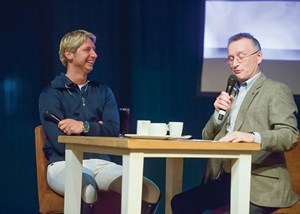
The defining feature of the 2012 GDF can be expressed in a single word: harmony. Whether it was the training methods of German Olympian Helen Langehanenberg or discussion of the high quality of judging at the London Olympics, the two days of presentations were marked by a sense of unity among the trainers, riders, judges and other stakeholders. The wide range of topics went from the mental and physical training program of Adelinde Cornelissen to Ingrid Klimke’s presentation on the use of cavalletti in dressage training. The GDF’s continuing mandate to provoke discussion was aided by British Olympian and long-time GDF moderator Richard Davison as well as by three-member panels that asked questions at the end of each presentation.
The four training presentations were all given by Olympians: individual dressage silver medalist Adelinde Cornelissen of the Netherlands, eventing team gold medalist Ingrid Klimke of Germany, Sweden’s Patrik Kittel and Germany’s individual dressage rider, Helen Langehanenberg.
Young Faces of the German Team
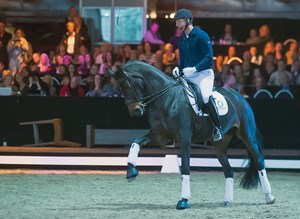
The 2012 German Olympic dressage team was unlike any before it, consisting as it did of three young women who had never been on an Olympic team. Germany’s team silver medal might have been regarded as a loss for the country that has dominated the Olympic podium for decades, were it not for the impressive performances delivered by these first-time team members. Germany’s silver medal in London represented the emergence of a new generation of top riders who are quickly becoming the future of dressage for their country.
Langehanenberg charmed the GDF audience with her talent and genuine love for her horses. Joined by her husband, Sebastian, and German Team Trainer Jonny Hilberath, she demonstrated her methods with two horses: an 8-year-old stallion and a 5-year-old mare, a daughter of her Olympic partner, Damon Hill. Riding both horses in snaffles with drop nose-bands, Langehanenberg emphasized sympathy and lightness in her training. The Germans have a long history of cultural tradition and dominance in the breeding, training and competing of dressage horses. Her presentation illustrated that Germany has the athletes and vision to remain a force in the sport, and it will not be left behind by younger dressage countries, such as England with its recent emergence as the Olympic champion.
Monica Theodorescu, who was recently appointed the replacement for Hilberath as team trainer, spoke to the audience about how the German system has always fed the top from the bottom with its Young Rider and young horse programs. Identifying talent and nurturing it is essential to success in any Olympic sport. Equestrian sport faces an additional challenge because one half of the athletic partnership, the horse, can be sold. With prices for Olympic horses reaching into the millions, the temptation to sell a top horse has been known to win out over patriotism. “We hope to keep these good horses, like Damon Hill, in our country,” said Theodorescu.
Two Happy Athletes
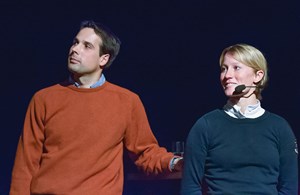
Adelinde Cornelissen, the reigning World Cup Champion with her silver- medal-winning Olympic horse, Parzival, is known in the dressage world for her impressive physical fitness. During her presentation, Cornelissen shared the philosophy and methods of her fitness program, both in and out of the saddle.
“With the training in general, there is a similarity between what you do with your horse and with yourself,” she said as she warmed up on an 8-year-old gelding by Jazz bred by her parents. “We want to train the horse so that he becomes a happy athlete,” she explained. “That consists of two parts: happy and athlete. You have to find a balance between the training and keeping the horse happy. You have to challenge the horse but also stay within his reach.”
Cornelissen uses the term “speed control” as her first goal with the horse once she has achieved relaxation. “We want to build muscles in the right places, but how? That starts with speed control. You need an easy gas pedal and an easy brake.” Cornelissen explained that it didn’t matter if she was riding a 3-year-old or her Olympic horse, the ability to control the pace must always be available, “whenever, wherever and for as long as you want it.” She reminded the audience that exercises, such as shoulder-in, are not trained for the purpose of competing in a test but because they make the horse more supple. Once speed control is achieved, the horse’s flexibility is the next goal. Flexibility, when combined with speed control, gives the rider the ability to ask for whatever she wants when she rides a test.
When her mounted demonstration was complete, Cornelissen introduced the audience to an impressive team of individuals who manage her personal fitness program. “We can only turn our horses into happy athletes if we are not left behind,” she said. “If we are not consistent enough in our aids, how can the horse be consistent in his reaction?”
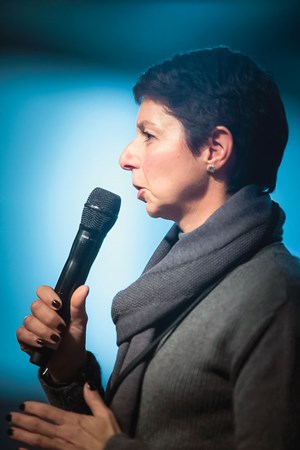
Running, juggling, work on the balance beam, skipping and even boxing form an extremely varied program de-signed to make Cornelissen the most well-rounded athlete she can be. Her main fitness coach is Dutch gymnastics specialist Tjalling van den Berg, who brings an understanding of both mental and physical training to his work. “Our training methods include subconscious thought processes and things that block optimal performance, which is balance in the case of Adelinde,” he said. “We use cross-fertilization from one sport to another and mental training.”
Cornelissen demonstrated remarkable core strength and balance, both of which are of unquestionable importance for a dressage rider.
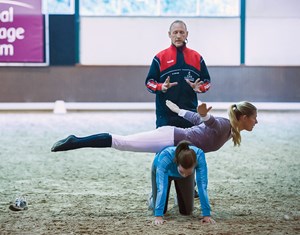

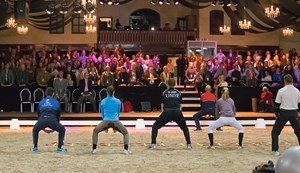
Next month, GDF Part 2: Tristan Tucker on bombproofing dressage horses, Ingrid Klimke on bringing back the cavalletti and David Stickland on the success of half marks in judging at the 2012 Olympics.
FEI Discord

There was one notable exception to the positive atmosphere at the 2012 Global Dressage Forum (GDF): when Fédération Equestre Internationale (FEI) Dressage Director Trond Asmyr took the podium to share recent and forthcoming developments within the FEI. Asmyr listed a number of changes to the rules that would be proposed at the 2012 FEI General Assembly, which took place one week after the GDF.
• As of 2013, helmets will be required in FEI competition for riders under the age of 18 and those competing in Young Horse classes.
• Fly bonnets no longer will be allowed at indoor competitions, where their use is assumed to be for the purpose of muffling sound.
• The FEI will be conducting a review of the format and procedure for qualifying for the Olympics. “There were a number of events added to the calendar at a very late moment and it was difficult for everyone,” he said.
Asmyr did not mention the dispute over Olympic qualifications between the Dominican Republic and Brazil/FEI that resulted in an appeal with the Court of Arbitration for Sport (CAS), but as soon as the floor was opened to questions, the media jumped straight in. When pressed to comment on whether he believed the FEI had earned the harsh criticism it received in the CAS decision, Asmyr responded only that “we are looking into the qualification procedures.”
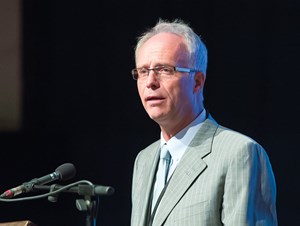
International Dressage Riders Club (IDRC) Secretary General Wayne Channon was asked to share the IDRC’s position on the controversy. “Mistakes were made from beginning to end, including the way in which the FEI handled the whole process,” he said. “In the IDRC meeting this morning, we concluded that we are looking for a more robust and complete statement about what could be changed.” Asmyr’s final comment was that he did not expect the FEI to make any further statements on the subject.
During the discussion of the Olympic qualifications, another topic of controversy that Asmyr had failed to mention in his presentation was raised by a member of the audience. The FEI had recently decided to propose the revocation of associate memberships at the upcoming General Assembly. Associate members had not been consulted by the FEI in the decision, and, in fact, the news that their associate memberships were about to be revoked had only just reached the IDRC and International Dressage Trainers Club (IDTC). “We are going to write a letter to the General Assembly and hope they will listen to us and defer it before making a final decision,” said IDTC President David Hunt. One year earlier, controversy had erupted over the FEI’s refusal to accept the IDRC’s proposed rider’s representative on the FEI Dressage Committee, Kyra Kyrklund. Kyrklund was eventually accepted, but the cancelling of associate memberships will exclude the IDRC from having any input on the appointment of future rider representatives on the Dressage Committee.




